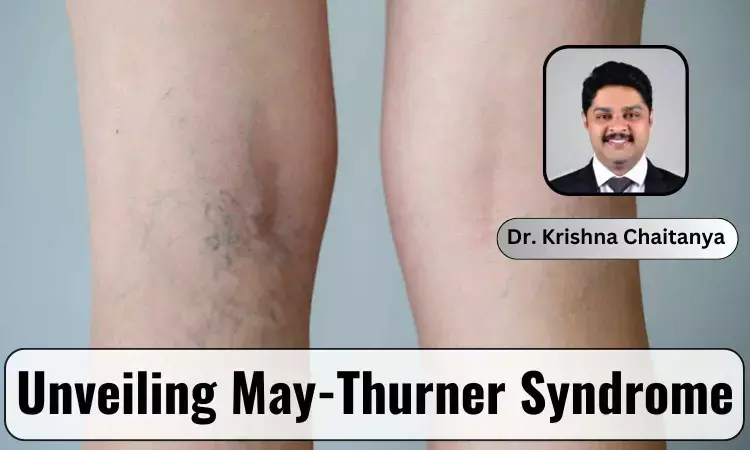- Home
- Medical news & Guidelines
- Anesthesiology
- Cardiology and CTVS
- Critical Care
- Dentistry
- Dermatology
- Diabetes and Endocrinology
- ENT
- Gastroenterology
- Medicine
- Nephrology
- Neurology
- Obstretics-Gynaecology
- Oncology
- Ophthalmology
- Orthopaedics
- Pediatrics-Neonatology
- Psychiatry
- Pulmonology
- Radiology
- Surgery
- Urology
- Laboratory Medicine
- Diet
- Nursing
- Paramedical
- Physiotherapy
- Health news
- Fact Check
- Bone Health Fact Check
- Brain Health Fact Check
- Cancer Related Fact Check
- Child Care Fact Check
- Dental and oral health fact check
- Diabetes and metabolic health fact check
- Diet and Nutrition Fact Check
- Eye and ENT Care Fact Check
- Fitness fact check
- Gut health fact check
- Heart health fact check
- Kidney health fact check
- Medical education fact check
- Men's health fact check
- Respiratory fact check
- Skin and hair care fact check
- Vaccine and Immunization fact check
- Women's health fact check
- AYUSH
- State News
- Andaman and Nicobar Islands
- Andhra Pradesh
- Arunachal Pradesh
- Assam
- Bihar
- Chandigarh
- Chattisgarh
- Dadra and Nagar Haveli
- Daman and Diu
- Delhi
- Goa
- Gujarat
- Haryana
- Himachal Pradesh
- Jammu & Kashmir
- Jharkhand
- Karnataka
- Kerala
- Ladakh
- Lakshadweep
- Madhya Pradesh
- Maharashtra
- Manipur
- Meghalaya
- Mizoram
- Nagaland
- Odisha
- Puducherry
- Punjab
- Rajasthan
- Sikkim
- Tamil Nadu
- Telangana
- Tripura
- Uttar Pradesh
- Uttrakhand
- West Bengal
- Medical Education
- Industry
Unveiling May-Thurner Syndrome: A Hidden Vascular Condition - Dr Krishna Chaitanya

In the realm of medical conditions, there are some lesser-known disorders that can significantly impact a person's health. May-Thurner Syndrome (MTS) is one such condition. Often underdiagnosed or misdiagnosed, MTS is a vascular disorder that affects the left lower limb. This blog aims to shed light on May-Thurner Syndrome, its causes, symptoms, diagnosis, and available treatment options.
Understanding May-Thurner Syndrome
May-Thurner Syndrome, also known as iliac vein compression syndrome, is a condition characterized by the compression of the left iliac vein, which is responsible for returning blood from the legs to the heart. In most individuals, the right iliac artery passes over the left iliac vein, allowing smooth blood flow. However, in MTS, the left iliac vein is squeezed between the spine and the right iliac artery, leading to a narrowing or obstruction.
Causes and Risk Factors
The primary cause of May-Thurner Syndrome is the anatomical variant in which the left iliac vein becomes compressed. This condition is more commonly observed in females but men can be affected too. Additionally, MTS can be associated with other predisposing factors such as prolonged sitting or standing, trauma to the area, or the presence of blood clots in the deep veins.
Symptoms
May-Thurner Syndrome often manifests as symptoms similar to deep vein thrombosis (DVT) or chronic venous insufficiency (CVI). Individuals with MTS may experience leg pain, swelling, heaviness, and fatigue. Some may develop varicose veins or skin discolouration in the affected leg. If left untreated, complications such as blood clots or ulcers may arise.
Diagnosis
Diagnosing May-Thurner Syndrome can be challenging due to its similarity to other vascular conditions. A thorough medical history, physical examination, and imaging studies are crucial for an accurate diagnosis. Doppler ultrasound, CT or MR venography, or intravascular ultrasound (IVUS) can be employed to visualize the affected veins and confirm the presence of compression or obstruction.
Treatment Options
Once diagnosed, the treatment approach for May-Thurner Syndrome aims to alleviate symptoms, prevent complications, and improve overall venous circulation. The treatment plan may involve a combination of conservative measures, medical therapies, and endovascular interventions.
Conservative measures include lifestyle modifications like regular exercise, leg elevation, and wearing compression stockings. Medical therapies may include anticoagulant therapy, thrombolytic therapy, and endovascular interventions including angioplasty with stent placement to widen the narrowed vein.
Conclusion
May-Thurner Syndrome is a relatively rare vascular disorder that can significantly impact an individual's quality of life if left untreated. Understanding the causes, recognizing the symptoms, and obtaining an accurate diagnosis are essential steps in managing this condition.
With appropriate treatment, individuals with MTS can find relief from symptoms and minimize the risk of complications. If you suspect you may have May-Thurner Syndrome or exhibit related symptoms, consult a vascular surgeon for a proper evaluation.
Disclaimer: The views expressed in this article are of the author and not of Medical Dialogues. The Editorial/Content team of Medical Dialogues has not contributed to the writing/editing/packaging of this article.
Dr Krishna Chaitanya MBBS, MS (General Surgery), MCH (Vascular Surgery) is a Lead Consultant (Vascular and Endovascular Surgery) at Aster RV Hospital, Bengaluru, Karnataka with over 10 years of experience in Vascular and Endovascular Surgery. He specializes in the management of varicose veins, peripheral arterial diseases, aortic aneurysm repairs, dialysis access procedures like AV fistula & graft, also the stroke prevention procedures like carotid endarterectomy, stenting and management of diabetic foot wounds.


